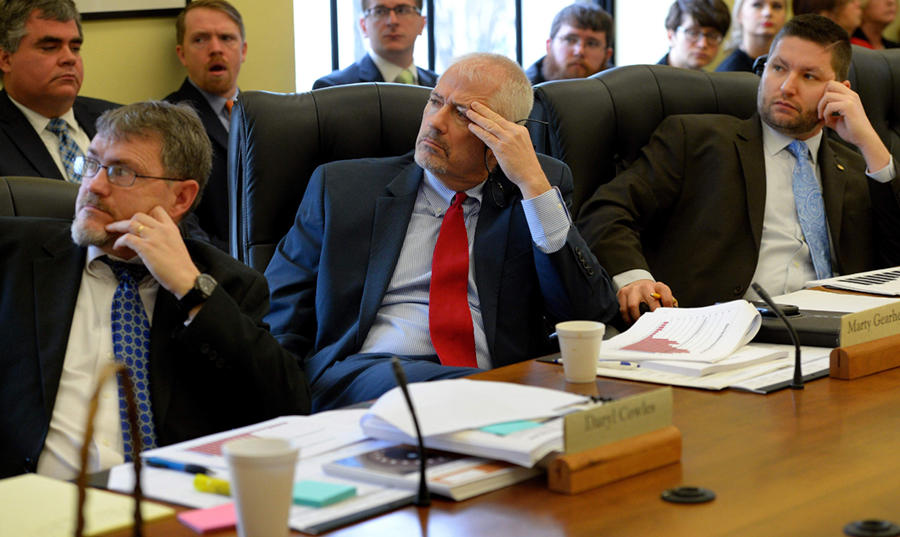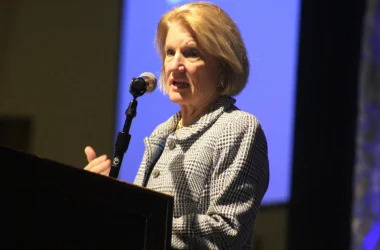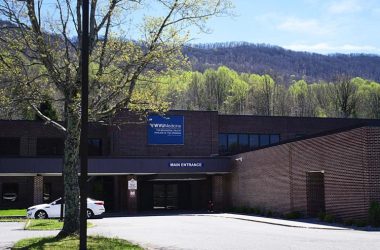By PHIL KABLER
Charleston Gazette-Mail
CHARLESTON, W.Va. — Officials with Gov. Jim Justice’s administration on Thursday offered West Virginia legislators little hope of a middle road between the governor’s two budget proposals — one that would raise taxes and fees to bring in nearly $400 million a year, and one that would make “drastic” budget cuts totaling $450 million.

(Photo by Chris Dorst)
During Finance Committee budget briefings Thursday, House Majority Leader Daryl Cowles, R-Morgan, asked Budget Director Mike McKown if the governor has a plan that falls between those two extremes.
“Is there a third document you have that’s somewhere between these two?” Cowles asked.
“No sir,” McKown answered.
The alternative of $450 million in cuts includes such draconian measures as closing all state colleges and universities except for Marshall and West Virginia universities, which would have their budgets effectively cut in half, and closures of entire agencies, including the Bureau of Senior Services and the Department of Veterans Assistance.
In Senate Finance on Thursday, the debate was whether the list of $450 million in cuts was comprehensive or a tactic to encourage a tax-adverse Legislature to embrace Justice’s budget plan.
“Was the point of this exercise to come up with cuts, or with what is the most shocking?” Sen. Corey Palumbo, D-Kanawha, asked.

“The purpose is simply to show the magnitude of what would have to be cut without revenue enhancements,” McKown said.
Senate Finance Chairman Mike Hall, R-Putnam, said that while the alternative list is not inclusive, it excludes no more than $250 million in other potential cuts — assuming that massive cuts to public education, Medicaid and the Department of Military Affairs and Public Safety are off the table. That department includes Corrections, Regional Jails, State Police, National Guard and other critical agencies.
“I believe our committee and analysts have identified other items, but there aren’t that many more,” Hall said.
McKown said that, going into the budget process, Justice and his advisers asked for a list of possible spending cuts, and a list of new revenue sources, ultimately coming up with a budget plan that relies more heavily on new taxes than on spending cuts.
“There was much agony in those meetings,” McKown said.
McKown noted that West Virginia has taken about $400 million out of its Rainy Day reserve funds to balance budgets, and that Justice proposes one last dip into Rainy Day to cover a $123 million shortfall in the 2016-17 budget.
In theory, he said, legislators could raid the Rainy Day funds to balance the 2017-18 budget, but that would empty the fund, wreck the state’s credit rating, and still leave an even larger shortfall looming for the 2018 Legislature.
Meanwhile, Hall noted that the budget does not include a $34 million increase for employers’ share of Public Employees Insurance Agency health insurance premiums.
Last year, legislators were pressured to come up with funding for PEIA employer premiums, to avoid severe benefit cuts for public employees proposed by the PEIA Finance Board.
See more from the Charleston Gazette-Mail





